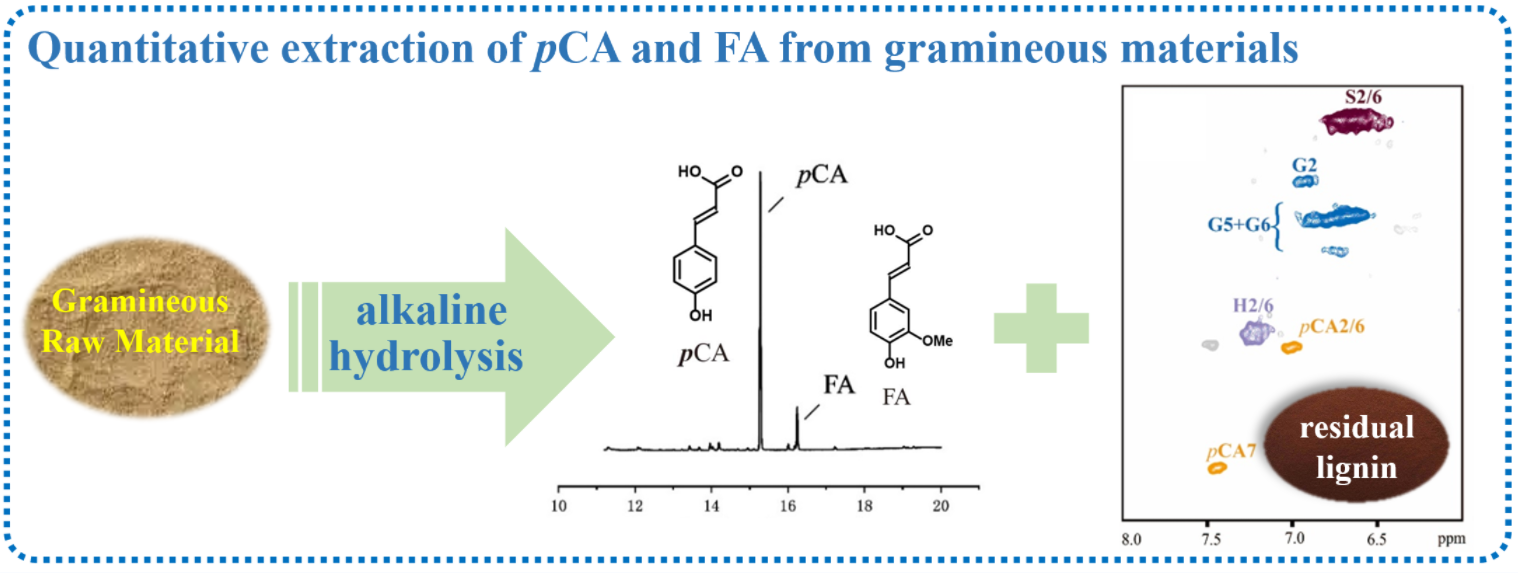 Open Access
Open Access
ARTICLE
Quantitative Extraction of p-Coumaric Acid and Ferulic Acid in Different Gramineous Materials and Structural Changes of Residual Alkali Lignin
State Key Laboratory of Pulp and Paper Engineering, School of Light Industry and Engineering, South China University of Technology, Guangzhou, 510640, China
* Corresponding Authors: Wu Lan. Email: ; Fengxia Yue. Email:
(This article belongs to the Special Issue: Process and Engineering of Lignocellulose Utilization)
Journal of Renewable Materials 2023, 11(2), 555-566. https://doi.org/10.32604/jrm.2023.025701
Received 27 July 2022; Accepted 18 August 2022; Issue published 22 September 2022
Abstract
Ferulic acid (FA) and p-coumaric acid (pCA) in bagasse, wheat straw, corn straw, and corncob were extracted by alkaline hydrolysis and characterized by gas chromatography (GC) and gas chromatography-mass spectrometry (GC-MS). It was found that the FA and most of the pCA in gramineous biomass could be dissociated and released after being treated with 1 M NaOH at 100°C for 4 h. The yields of pCA/FA in bagasse, wheat straw, corn straw, and corncob determined by GC-FID are 39.8/11.5, 13.7/11.0, 28.0/11.0, and 35.1/14.5 mg/g, respectively. The raw materials and the treated solid residues were characterized by gel-state 2D Heteronuclear Single Quantum Coherence Nuclear Magnetic Resonance (2D HSQC NMR). It was found that only a small amount of lignin was detected in the residue after alkali treatment, indicating that the alkali treatment conditions can effectively cleave the FA and pCA. Additionally, the lignin in the alkali solution was recovered and characterized by 2D HSQC NMR. The FA was not able to be detected by NMR, whereas a small amount of pCA remained in the alkali lignin. This study reveals the structural change of residual lignins during the quantitative isolation of FA and pCA, which is essential for the selective isolation of pCA/FA and valorization of residual alkali lignin.Graphic Abstract

Keywords
Cite This Article
 Copyright © 2023 The Author(s). Published by Tech Science Press.
Copyright © 2023 The Author(s). Published by Tech Science Press.This work is licensed under a Creative Commons Attribution 4.0 International License , which permits unrestricted use, distribution, and reproduction in any medium, provided the original work is properly cited.


 Submit a Paper
Submit a Paper Propose a Special lssue
Propose a Special lssue View Full Text
View Full Text Download PDF
Download PDF Downloads
Downloads
 Citation Tools
Citation Tools